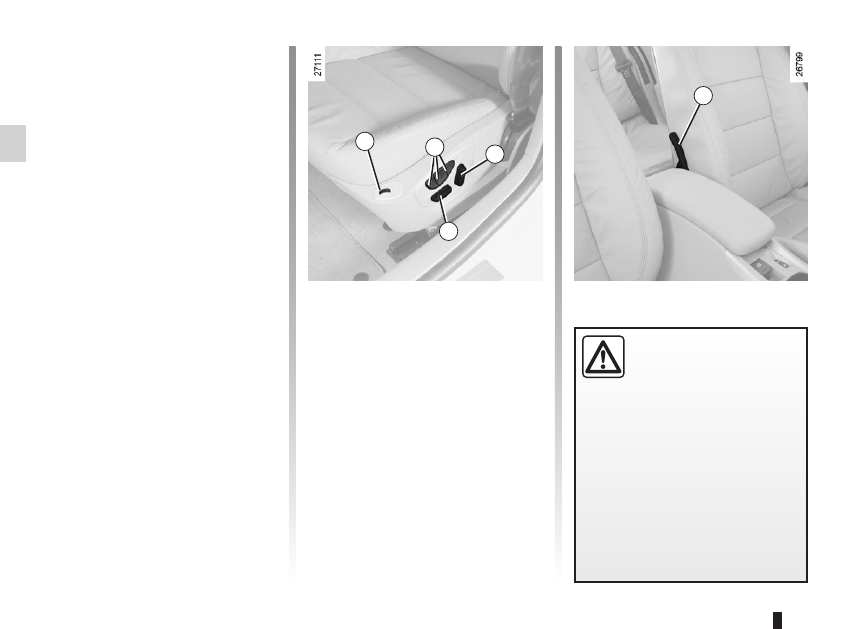Renault Laguna (2012 year). Instruction - part 2

front seats
with electric controls ........................................(current page)
1.18
ENG_UD6500_2
Sièges avant à à commandes électriques (X91 - B91 - K91 - Renault)
ENG_NU_936-5_BK91_Renault_1
Switch 3 is used for adjusting the seat-
back and switch 4 is used for adjusting
the seat squab.
On equipped vehicles, buttons 2 are
used to store the chosen driving posi-
tion (refer to the following page).
Adjusting the seat squab:
– To move the seat forwards or back
Move switch 4 forwards or back-
wards.
– To raise or lower the rear of the
seat base
Move the rear of switch 4 upwards or
downwards.
– To raise or lower the front of the
seat base
Move the front of switch 4 upwards
or downwards.
Adjusting the lumbar support
on the driver’s seat:
Lower handle 5 to increase the support
and lift to decrease it.
Adjusting the seatback:
To tilt the seatback, move the top of
switch 3 forwards or backwards.
Heated seats
(depending on vehicle)
With the engine running, turn control 1
to either position
1, 2 or 3 (depending
on the temperature required). An in-
dicator light on the instrument panel
lights up once the front seat heating
system is operating.
The system, which has a thermostat,
decides whether or not the heating is
needed.
fRONT sEATs WITH ELEcTRIc cONTROL
1
4
3
2
5
For safety reasons, carry
out any adjustments when
the vehicle is not being
driven.
We would advise you not to recline
the seatbacks too far to ensure that
the effectiveness of the seat belts is
not reduced.
Nothing should be placed on the
floor (area in front of driver) as such
objects may slide under the pedal
during braking manoeuvres, thus
obstructing its use.